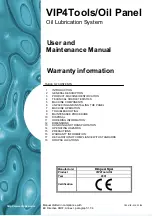
Page 18
Arsenic (As) is a naturally occurring contaminant found in many ground waters.
Arsenic in water has no color, taste or odor. It must be measured by an arsenic
test kit or lab test.
Public water utilities must have their water tested for arsenic. You can obtain the
results from your water utility contained with in your consumer confidence report.
If you have your own well, you will need to have the water evaluated. The local
health department or the state environmental health agency can provide a list of
test kits or certified labs.
There are two forms of arsenic: pentavalent arsenic (also called As (V), As (+5))
and trivalent arsenic (also called As (III), As (+3)). In well water, arsenic may be
pentavalent, trivalent, or a combination of both. Although both forms of arsenic are
potentially hazardous to your health, trivalent arsenic is considered more harmful
than pentavalent arsenic.
RO systems are very effective at removing pentavalent arsenic. A free chlorine
residual will rapidly convert trivalent arsenic to pentavalent arsenic. Other water
treatment chemicals such as ozone and potassium permanganate will also change
trivalent arsenic to pentavalent arsenic. A combined chlorine residual (also called
chloramine) where it does convert trivalent arsenic to pentavalent arsenic, may
not convert all the trivalent arsenic in to pentavalent arsenic. If you get your water
from a public water utility, contact the utility to find out if free chlorine or combined
chlorine is used in the water system.
This Watts reverse osmosis system is designed to remove up to 98% of pentavalent
arsenic. It will not convert trivalent arsenic to pentavalent arsenic. Under laboratory
standard testing conditions, this system reduced 0.30 mg/L (ppm) pentavalent
arsenic to under 0.010 mg/L (ppm) (the USEPA standard for drinking water). Actual
performance of the system may vary depending on specific water quality conditions
at the consumer’s installation.
The RO membrane component of this reverse osmosis system must be maintained
according to its recommended maintenance cycle. Specific component identification
and ordering information can be found in the installation/operation manual
maintenance section.
Arsenic Fact Sheet



































